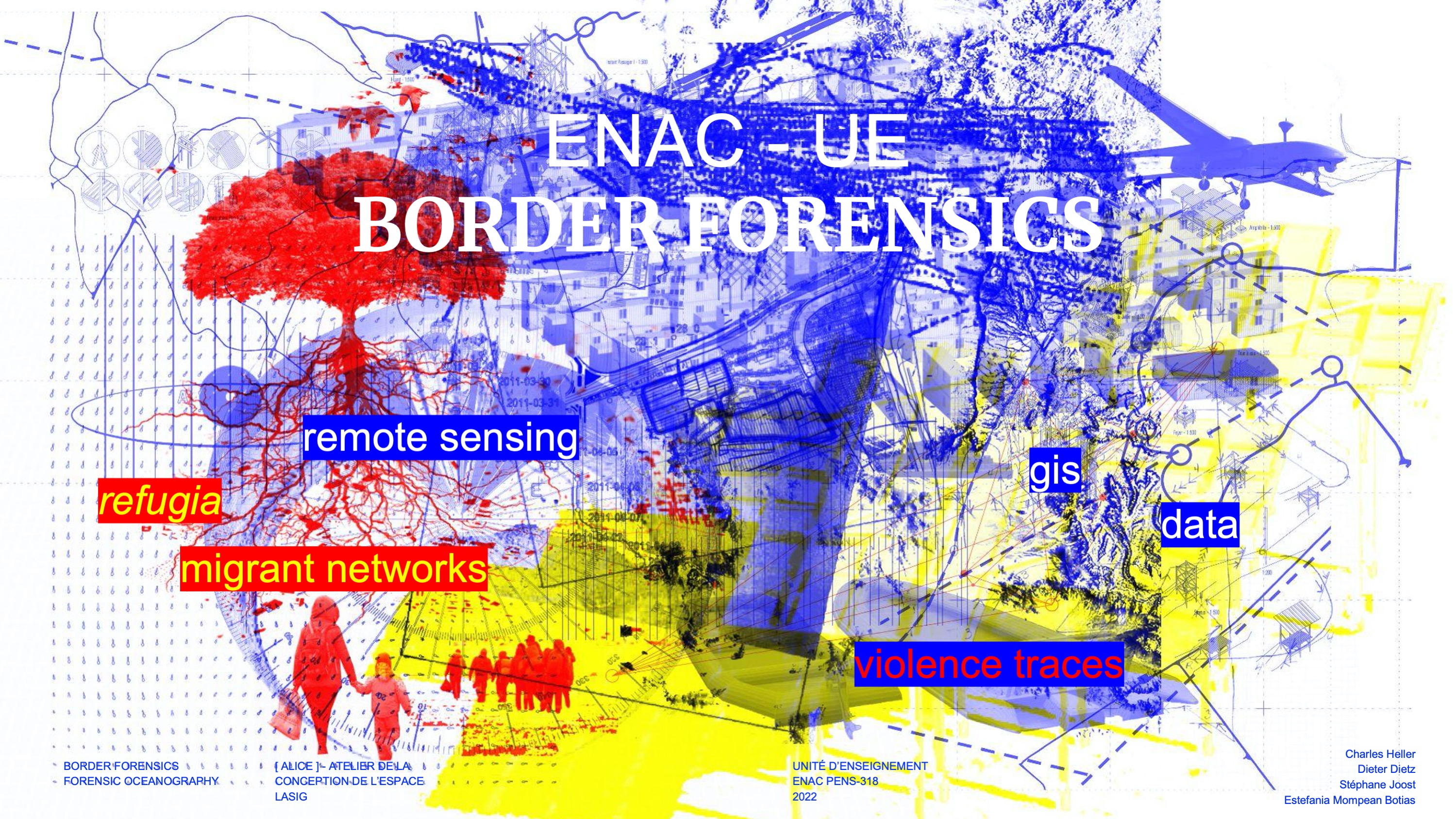
Areas of mobility conflicts erupt across the globe – wherever the movements of migrants clash with bordering practices. They are most intense along the fault lines of the world system, where economic inequality, environmental injustice and racialized difference overlap. These mobility conflicts precaritize migrants’ journeys, and structurally generate large-scale borders deaths. The IOM has counted more than 30.000 deaths globally since 2014 – and many more lives are lost leaving no other trace then the absence that haunts their families. The Mediterranean is the epicentre of this global deathscape.
This course will introduce students to the causes and shifting modalities of border violence, focusing specifically on three border zones across the Euro-African borderscape (Sahara, Mediterranean, Alps), and the way spatial analysis, remote sensing and architectural intervention can be used to document and contest this violence. It will also explore with students concrete proposals to transform the infrastructures of (im)mobility operating in the selected border zones. The course is divided into two main parts: a first part offers a theoretical and methodological introduction to border violence and its documentation, that will serve as the basis for the second part, which will involve experimentation with the documentation and transformation of border violence in relation to specific sites.
The first part of the course introduces students to the “forensic turn” in human rights practice and social sciences – the use of novel techniques to make traces of violence emerge and present them in various forums – and the critical forensic practice pioneered by Forensic Architecture. We will then focus specifically on the research conducted within the Forensic Oceanography project, which exemplifies the use of forensic techniques to document border violence, all the while unpacking theoretical and methodological challenges that resonate far beyond migration and bordering at sea.
The second part of the course will bring students to focus on specific border zones, and experiment with new tools and approaches towards spatial analysis and spatial transformation. While there will be common sessions for all students, students will also be able to form smaller clusters that may focus on particular border zones, and emphasize one or the other dimensions of spatial analysis and spatial transformation.
- Professor: Dieter Dietz
- Professor: Stéphane Joost
- Professor: Mathias Lerch
- Professor: Estefania Mompean Botias
- Teacher: Lucia-Nieves Garcia de Jalon Oyarzun
- Teacher: Julien Lafontaine Carboni
- Teacher: Marie Hannah Florence Trossat